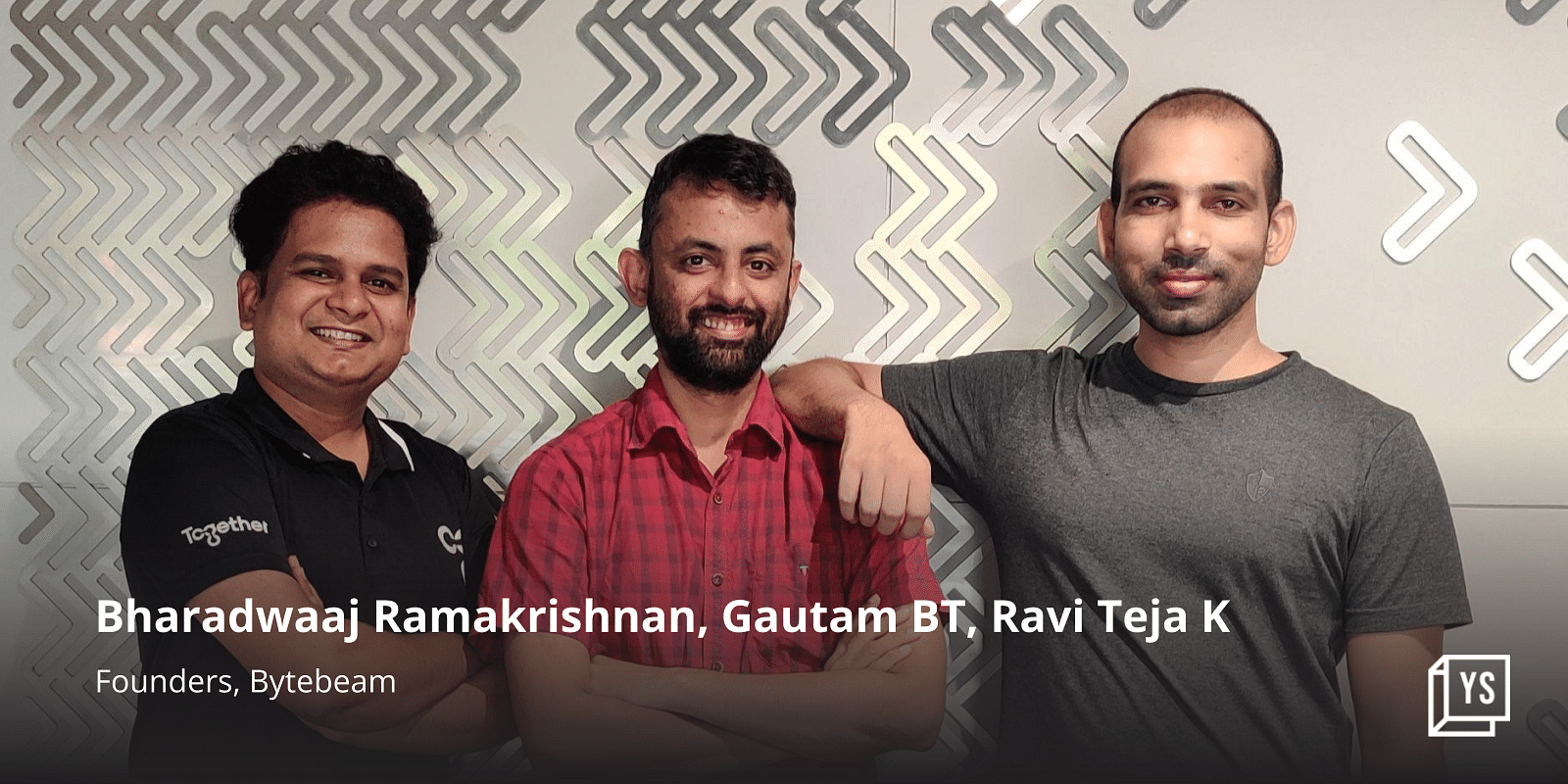In 2015, Gautam BT was in his second stint at Flipkart, as the ecommerce platform was reinventing itself for the smartphone era. The demand for Android handsets was growing fast across price points. And Flipkart wanted to be the leading ecommerce app in India, with Amazon on its heels.
As part of the mobile-web team in Flipkart, Gautam came across a plethora of software like Firebase for developers to build and augment mobile applications. But, it isn’t quite the case for developers working on Internet of Things (IoT) applications, he asserts.
Bytebeam, founded by Gautam, Ravi Teja K, and Bharadwaaj Ramakrishnan in 2019, wants to plug that gap, as more original equipment manufacturers (OEMs) design and develop their devices as IoT applications.
Applications can range from electric vehicles, wearables, and kitchen appliances, to smart containers of logistics and warehousing companies, and drones.
“The hardware ecosystem is still coming up in India, and is at the stage that mobile apps were in 2008,” says Gautam, Co-founder and CEO of Bytebeam. “A lot of companies are trying a lot of things.”
In this emerging context, Bytebeam is evolving as a backend platform for product managers and developers in OEMs to build and augment their smart devices. It wants to be the cloud backend for IoT applications.
Backend Platform as a Service
The opportunity exists because of the nature of IoT, which refers to a system of interoperable computing devices, mechanical and digital machines with the capability to transfer data over a network.
Most of the cloud infrastructure platforms cater to software applications, whereas IoT requires a lot of engineering on the hardware side because of the mechanical aspects of IoT.
Between 2015 and 2018, the Bytebeam founders experienced the problem first-hand when they were developing connectivity features and smart solutions at Ather Energy, a pioneering electric two-wheeler company from India.
“The existing infrastructure solutions that existed were not made for IoT use cases,” says Achal Kothari, Head of Business at Bytebeam, who has also worked closely with Ather Energy. “We had to either retro-fit existing solutions or tools I was familiar with, or build solutions on our own,” Gautam adds.
To be sure, there is now a growing tribe of IoT application developer platforms, such as Ayla Networks in the US, Tuya in China, apart from Sibros for the auto industry, and Memfault, a cloud-based platform to debug, monitor, and update connected devices remotely.
The global market for smart home devices grew 11.7 percent in 2021 over the previous year, with more than 895 million devices shipped, according to International Data Corporation (IDC), a market intelligence and technology advisory firm.
IDC found networked video-entertainment devices (smart TVs, streaming sticks, and smart set-top boxes) to be the largest contributor of shipments, accounting for nearly 35 percent in 2021, and growing 4.8 percent over 2020. Smart lighting devices are forecast to be the fastest-growing category of devices with a five-year compound annual growth rate of 23.6 percent, it added.
Bytebeam pegs its market opportunity to be $14 million in size, and wants to begin by focusing on the Indian market. All its customers have operations in India. “We want the platform to mature before we go to international markets,” Gautam says.
The Bytebeam platform focuses on three specific areas that are a need across industries gearing up to be relevant in the age of 5G networks.
The first area is analytics for OEMs to be able to collect and visualise data. Second, Bytebeam provides the capability for enterprises to roll out over-the-air (OTA) updates, and track improvements in smart devices.
And third, it provides a mobile application to sync data between the devices and mobile for the smart-device user to interact with the device.
“We are now building a much more sophisticated tool, where there are no limits to the number of data points we can collect,” Gautam says. “We support high-frequency data and have a lot more richer visualisation in the backend.”
This platform is built with security at its core, and data encryption at device level. By allowing users to have role-based access control, unauthorised data access can be prevented, thereby ensuring privacy. .
Raviteja says the founding team has worked hard to build reliable SDKs (software development kits) for unreliable networks.
“This is to ensure all updates happen well, or that remotely a device can take commands from the cloud. We are also trying to standardise how the device-side of the SDK should be done,” Raviteja adds.
In 2021, Bytebeam won a $250,000 grant as part of the Accel Atoms programme. Since then, it has signed up enterprises, like Exponent Energy, Matter Motor Works and Micelio Motors.
Last month, the SaaS venture raised $3 million in its seed round from Together fund, Accel, and Strive VC, with participation from Motherson Group’s AdvantEdge VC; Phanindra Sama, Co-founder of Redbus; Tanmai Gopal, Co-founder of Hasura; Vimal Kumar, Founder of Juspay; Mekin Maheshwari, former Chief People Officer at Flipkart; Deepak Anchala, Founder of Slintel; and Aakrit Vaish, Co-Founder of Haptik.
For now, the Bytebeam founders anticipate demand from the electric vehicle industry in India, as more OEMs innovate to compete with the likes of Ather. The domestic electric two-wheeler segment has grown by 7.6 times between fiscal year 2016 and fiscal year 2020, according to the Society of Manufacturers of Electric Vehicles.
At the same time, the platform will be relevant for any smart-device OEM.
“Collecting and visualising data, and syncing data between device and mobile are common requirements for a smartwatch developer, and for hardware companies that are building smart devices and augmenting features,” Gautam explains.
A lot of companies don’t build smart features because of the dearth of infrastructure, Bharadwaaj says. “Given a chance to have higher levels of abstractions to make this easy, they then build these things,” he adds.
Gautam says OEMs shouldn’t be typically building a huge backend team for their IoT applications.
“They should be focused on what they are good at. And this is what we are trying to solve for other companies: build that solid backend infrastructure for any company to come and adopt technology more easily, to roll out products much faster, and better.”


![Read more about the article [Jobs Roundup] Here’s how you can land a role at ecommerce fulfilment platform Shiprocket](https://blog.digitalsevaa.com/wp-content/uploads/2021/07/Imagemt8q-1589180042829-300x150.jpg)

![Read more about the article [Funding alert] Atlan raises $16M Series A investment led by Insight Partners](https://blog.digitalsevaa.com/wp-content/uploads/2021/05/Atlan-1621922435404-300x150.jpg)





![Read more about the article [YS Learn] How building a strong culture can help companies create value](https://blog.digitalsevaa.com/wp-content/uploads/2021/02/Culturetips-01-1609164196814-300x150.png)